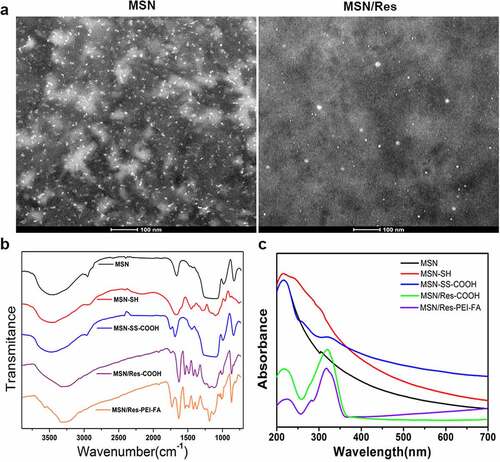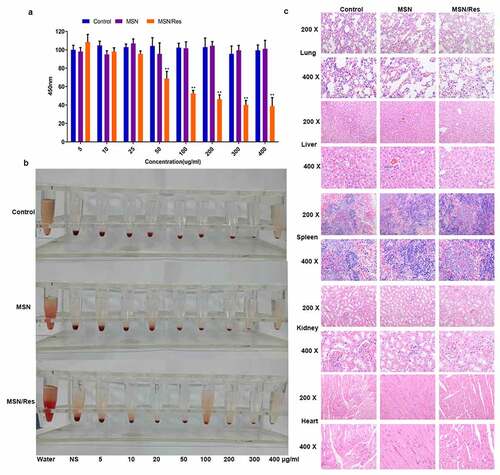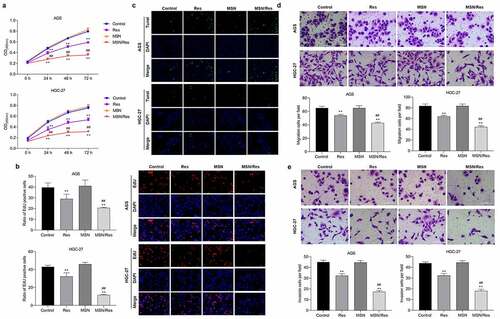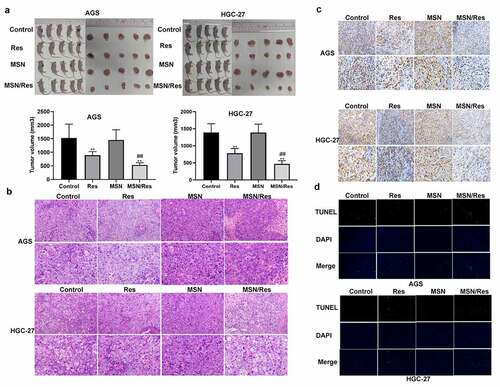Figures & data
Figure 1. Preparation and characterization of resveratrol-loaded (Res-loaded) mesoporous silica nanoparticles (MSN)

Figure 2. Cytotoxicity assay of Res-loaded MSN

Figure 3. Res-loaded MSN showed better suppressive effect on HGC-27 and AGS cells than treatment with Res in vitro

Figure 4. Res-loaded MSN showed better anticancer effect on gastric cancer than treatment with Res in vivo

